Bangude Pulimunchi is a traditional coastal curry from Mangalore, India. This fish pulimunchi has succulent mackerel fish, red chilies, spices, and tangy tamarind. This spicy and tangy fish curry from South Indian cuisine is a must-try for seafood lovers. Here’s an easy recipe with step-by-step photos and a quick video tutorial. Serve with Steamed Rice or Neer Dosa.
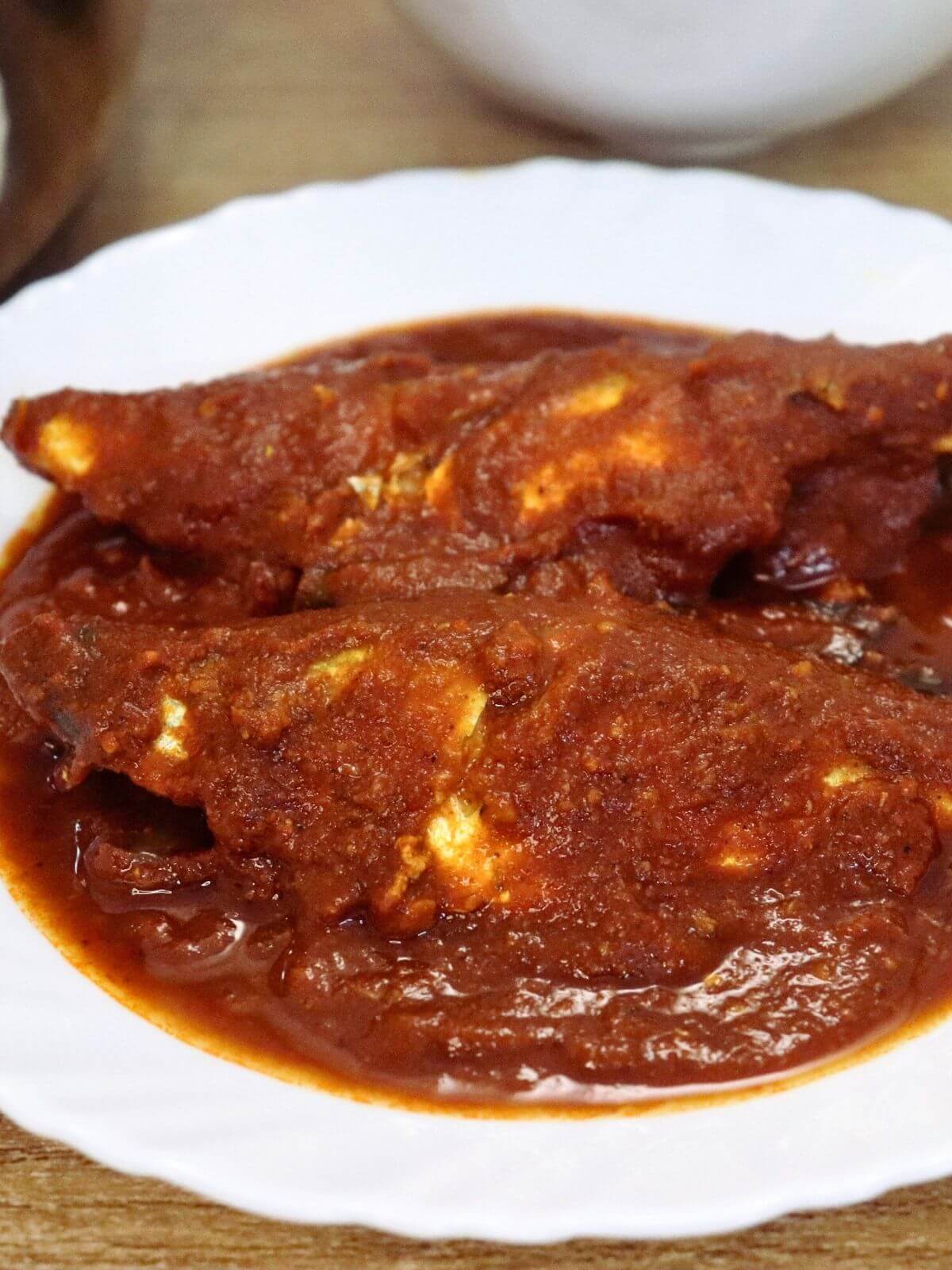
Bangude Pulimunchi is a staple dish in Mangalorean households, known for its tangy and spicy flavors. “Puli” means “tamarind” or “sour” and “Munchi” means “chilli” in the Tulu language of Mangalore. The term bangude stands for Mackerel fish. It is a sour and spicy Mackerel fish curry, traditionally prepared by the Mangalore Bunt community.
This traditional Mangalorean bunt-style fish curry pairs well with rice. It is a quick and easy curry made with Mackerel fish. Mackerel, a versatile fish, is a staple in coastal regions. Whether it's a flavorful curry like Bangude Pulimunchi, Mackerel Curry, or a crispy Mackerel Fish Fry, these mackerel dishes are always loved by my family. The spices complement its natural flavor perfectly, creating a truly satisfying experience.
About this Bangude Pulimunchi Recipe
This is my mom's Bangude Pulimunchi recipe. My mother always said that the best fish curry is always made in a clay pot. Indeed, many coastal regions traditionally cook their fish curries in clay vessels.
Clay cookware heats up more slowly and evenly than metal, which helps to bring out the delicate flavors of the fish and the spices. But you can also make it in a simple steel vessel like I did in this pulimunchi recipe.
It's so easy to prepare fish pulimunchi. Start with toasting the spices. Next, add tamarind, onion, garlic, and a handful of other ingredients. Grind the mixture into a fragrant spice blend. Finally, cook the spice blend and simmer the Mackerel fish until tender and infused with the flavorful pulimunchi sauce.
If you like this recipe, you may also like these South Indian seafood recipes
Ingredients Notes
The heart and soul of Bangude Pulimunchi lies in the delicate balance of its key ingredients. Tamarind's tangy flavor cuts down the fiery heat of red chilies. Balanced with coriander, mustard seeds, fenugreek seeds, and curry leaves, creating a deliciously aromatic Indian fish curry. Here’s what you will need to make this recipe.
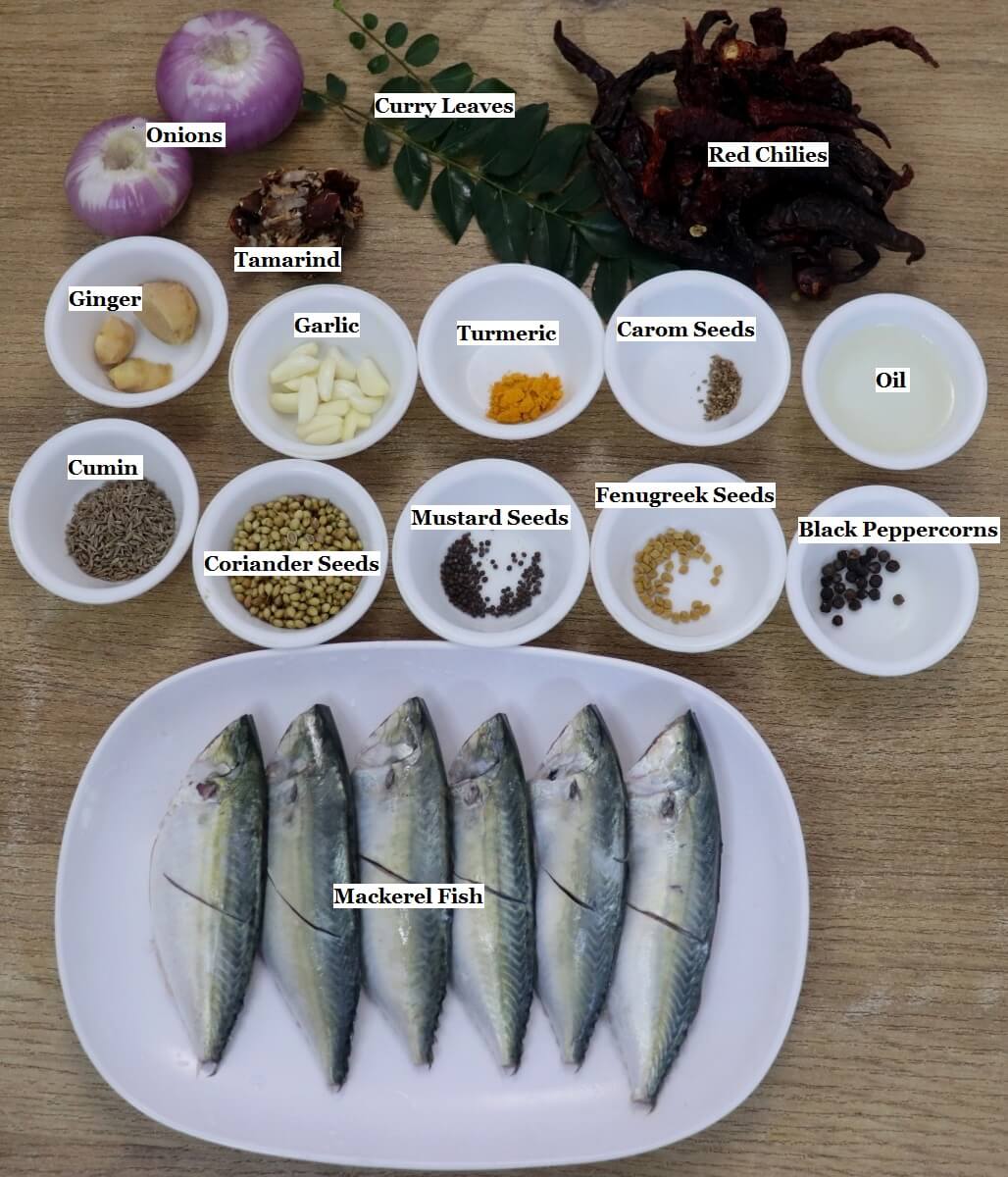
- Fresh Bangda (Mackerel) Fish: Fresh fish tastes the best. I have used fresh Mackerel fish or bangda fish for this recipe. Frozen fish also works well for this recipe. Thaw them properly before using them. You can also use Sardines (Tarle).
- For Puliminchi Spice Paste: I have used coriander seeds, cumin, mustard seeds, fenugreek seeds, carom seeds, peppercorns, turmeric powder, and dried red chilies.
- Tamarind: It is the main ingredient for Pulimunchi spice paste. It provides a sour taste to the masala. You can also add tamarind paste.
- Red Chilies: You can use Byadgi red chilies or Kashmiri red chilies for the recipe. Deseed the red chilies to reduce their spiciness and add as per taste.
- Onion, Ginger, and Garlic: Makes the base of masala paste.
- Green chilies: Add as per taste.
- Curry leaves: Add authentic flavor to the Pulimunchi fish curry.
How to make Bangude Pulimunchi (Fish Pulimunchi) - Step by Step Photos
- In a heavy-bottomed pan, dry roast coriander seeds, cumin, mustard seeds, fenugreek seeds, carom seeds, and peppercorns over low heat until aromatic. Transfer them to a plate.
- In the same pan, dry-roast red chilies on low heat until crisp. Remove them to the same plate. Let the roasted ingredients cool down before transferring them to a grinder jar.
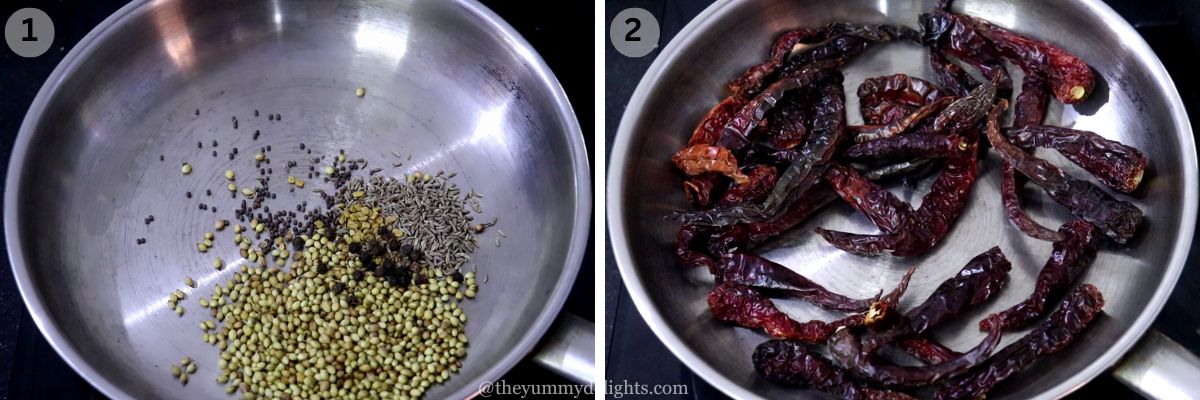
- Add onion, garlic, ginger, tamarind, and turmeric powder to a blender. Add a little water and grind until smooth. Set this spice blend aside.
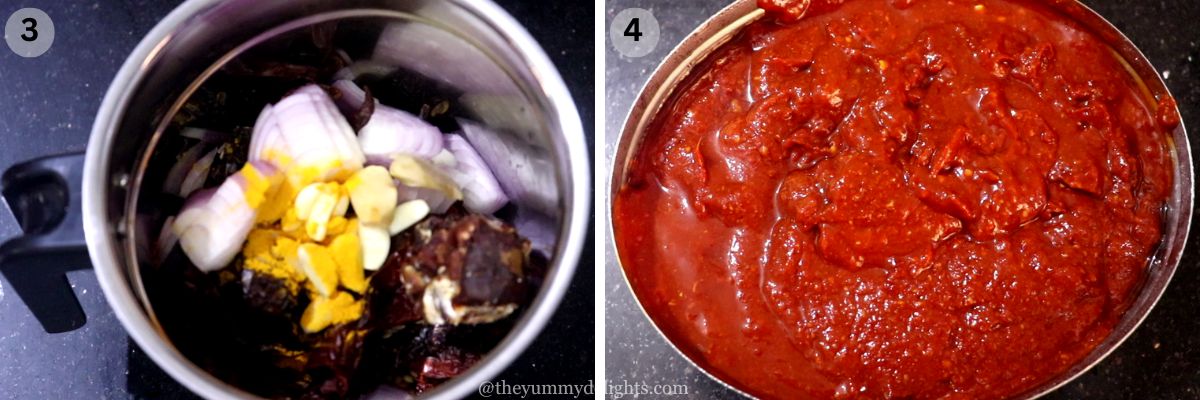
- Heat 2 tablespoons of oil over medium heat. Add onions, ginger, green chilies, and curry leaves. Stir and cook until the onions are translucent.
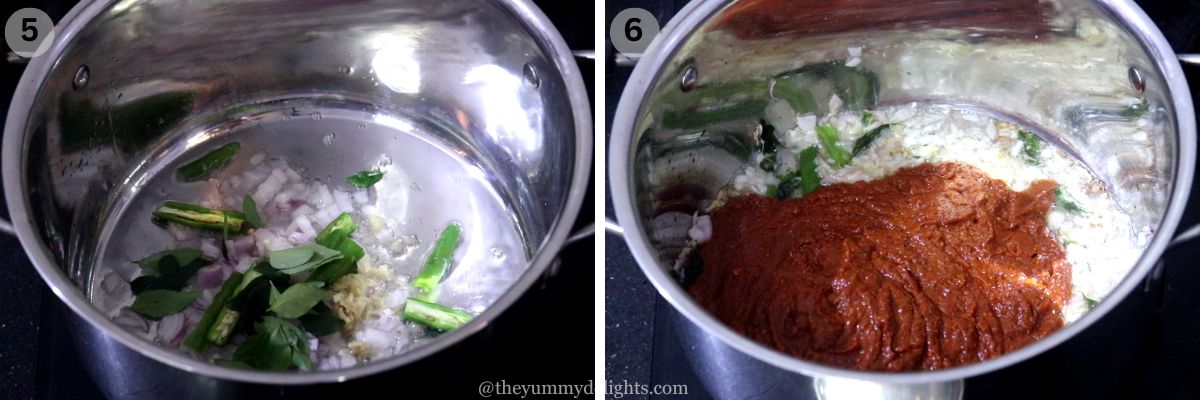
- Add the spice blend and stir it into the mixture. Cook for one minute, then add salt. Stir and cook for 3-5 minutes, or until the masala is well cooked. You'll notice oil starting to separate from the sides. If the masala/spice blend burns, lower the heat.
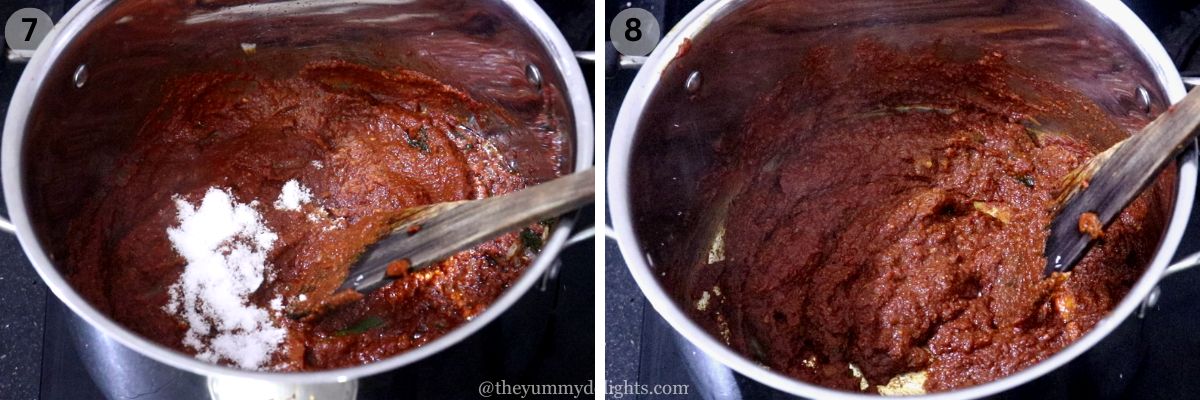
- Add a little water to the blender jar, rinse it out, and then add the rinse water to the curry. Fish Pulimunchi is a thick curry so add a little water and then check the consistency. If needed, add more. Cover and cook until the masala boils.
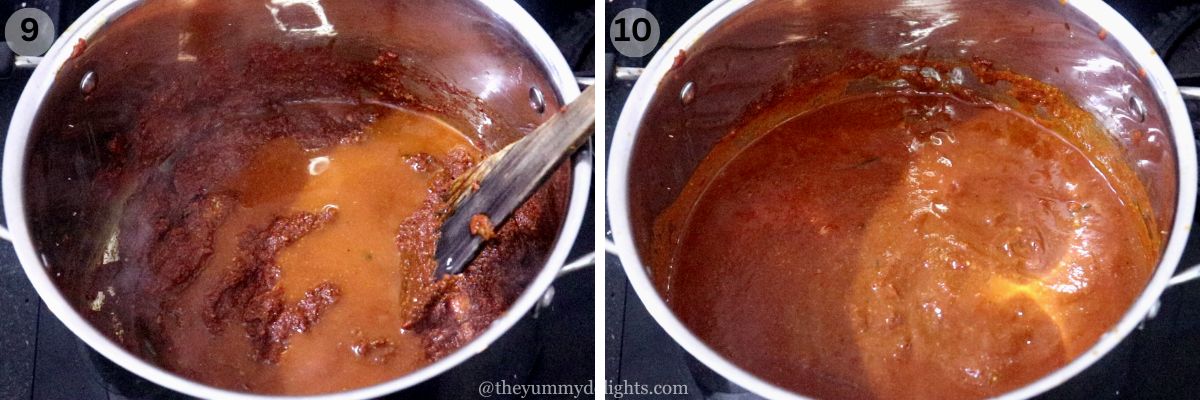
- When the curry is boiling, reduce the heat, add the Mackerel fish, and avoid stirring with a ladle afterward. Gently rotate the pot to incorporate the fish into the masala.

- Finally, add the curry leaves. Cook this Mackerel fish curry for 5 minutes on low heat. Bangude Pulimunchi is ready to serve. Enjoy it with rice.
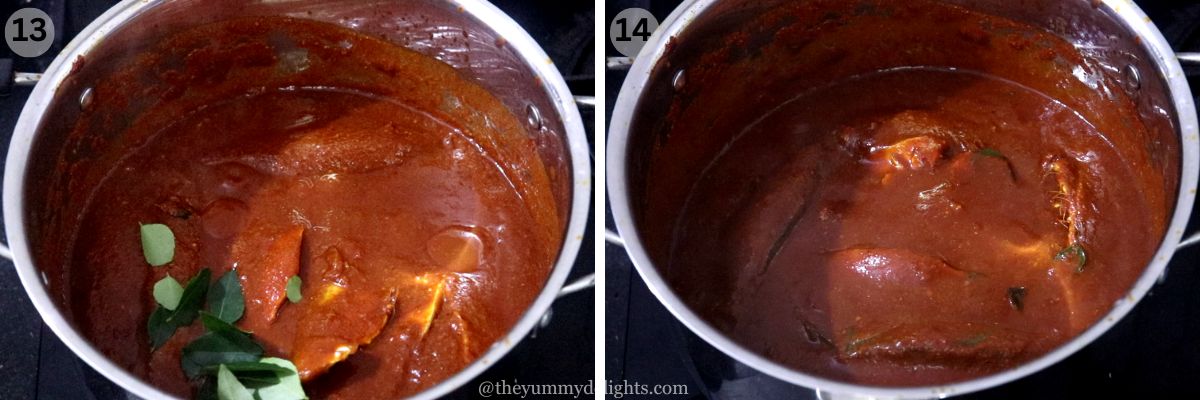
Tips to make Best Bangude Pulimunchi (Fish Pulimunchi)
- Pulimunchi curry is quite thick, so do not add too much water while cooking.
- After adding fish to the curry, please do not touch it with a ladle/spoon as it will break the fish. Gently rotate the pot to incorporate the fish into the masala. For a visual guide check out Bangude Pulimunchi recipe video.
- If you are following this recipe keep the ratio of tamarind and red chilies the same. If you are decreasing the quantity of red chilies then decrease the quantity of tamarind too.
If you try this recipe, please leave a comment and rating below. We'd love to hear your feedback.
And, consider following me on social media so we can stay connected. I’m on Facebook, Pinterest, and YouTube!
Related Recipes
Recipe Card
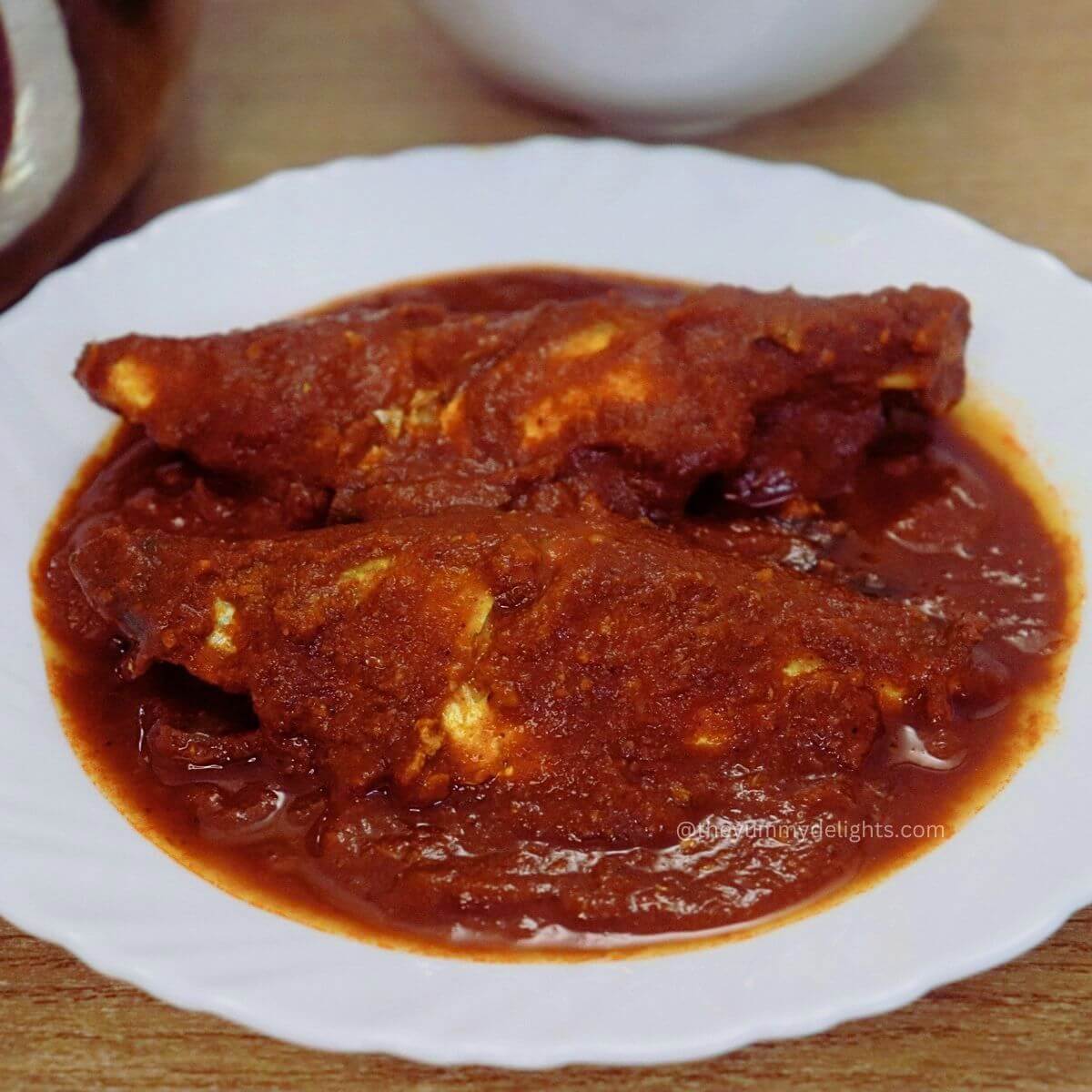
Bangude Pulimunchi Recipe (Fish Pulimunchi)
Video

Equipment
- 1 Heavy bottom pot
Ingredients
- 500 grams fresh Bangda (Mackerel Fish)
For Puliminchi Spice Paste
- 4 teaspoon coriander seeds Dhania
- 1 teaspoon cumin seeds Jeera
- ¼ teaspoon mustard seeds Sasam/Rai
- ¼ teaspoon fenugreek seeds methi dana
- ⅛ teaspoon carom seeds Ajwain
- ½ teaspoon peppercorns kali mirchi
- 25 dried red chilies (Byadgi or Kashmiri)
- 1 small onion roughly chopped
- 6-8 garlic cloves
- A small piece of ginger
- ½ teaspoon turmeric powder
- lemon size ball of tamarind discard seeds
To Make Bangude Pulimunchi
- 1 tablespoon coconut oil
- 1 small onion, chopped
- a small piece of ginger, finely chopped
- 2 green chilies, slit (add as per taste)
- curry leaves
- salt to taste
Instructions
- In a heavy-bottomed pan, dry roast coriander seeds, cumin, mustard seeds, fenugreek seeds, carom seeds, and peppercorns over low heat until aromatic. Transfer them to a plate.
- In the same pan, dry-roast red chilies on low heat until crisp. Remove them to the same plate. Let the roasted ingredients cool down before transferring them to a grinder jar.
- Add onion, garlic, ginger, tamarind, and turmeric powder to a blender. Add a little water and grind until smooth. Set aside.
- Heat 2 tablespoons of oil over medium heat. Add onions, ginger, green chilies, and curry leaves. Stir and cook until the onions are translucent.
- Add the spice paste and stir it into the mixture. Cook for one minute, then add salt. Stir and cook for 3-5 minutes, or until the masala is well cooked. You'll notice oil starting to separate from the sides. If the masala burns, lower the heat.
- Add a little water to the blender jar, rinse it out, and then add the rinse water to the curry. Pulimunchi is a thick curry so add little water. Cover and cook until the masala boils.
- Reduce the heat. When the curry is boiling, add the fish and avoid stirring with a ladle afterward. Gently rotate the pot to incorporate the fish into the masala. Finally, add the curry leaves.
- Cook it for 5 minutes on low heat. Bangude Pulimunchi is ready to serve. Enjoy it with rice.
Notes
- Pulimunchi curry is thick so do not add too much water to it while cooking.
- After adding fish to the curry, please do not touch it with a ladle/spoon as it will break the fish. Gently rotate the pot to incorporate the fish into the masala. For a visual guide check out the fish pulimunchi video recipe.
- If you are following this recipe keep the ratio of tamarind and red chilies the same. If you are decreasing the quantity of red chilies then decrease the quantity of tamarind too.
- Read our full nutrition disclaimer here.
Nutrition
Nutrition information is automatically calculated, so should only be used as an approximation.

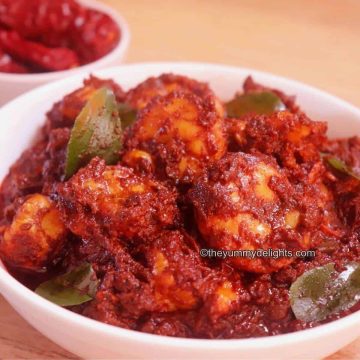
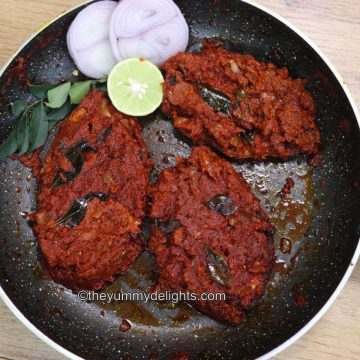
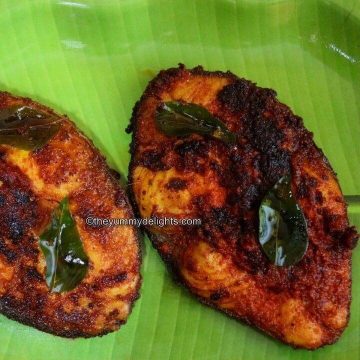

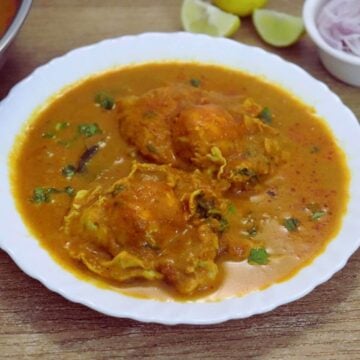



Sophia Mascarenhas
very delicious
Preeti
Glad you enjoyed.